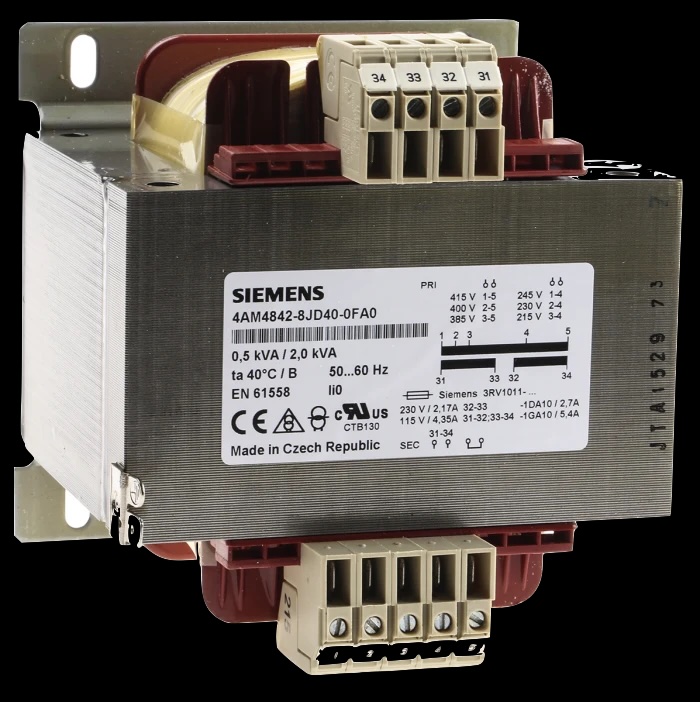What is the Lower Explosion Limit (LEL)? A Critical Value in Gas Safety
In industrial safety, evaluating the potential hazards of gases is of paramount importance. The Lower Explosion Limit (LEL) is a...
Devamını Oku

Structured cabling is one of the fundamental components of modern technology infrastructure, ensuring the smooth and sustainable operation of network systems spread across large areas. This method refers to the installation of cables in a systematic and organized manner, significantly enhancing communication and data transmission processes. In today’s business world, speed, security, and scalability are crucial elements of network infrastructure. This is where properly designed and implemented structured cabling systems come into play.
Companies like Adatech, which excel in engineering solutions, approach infrastructure cabling projects by adhering to international standards to create flexible, future-proof, and high-performance systems. Cabling operations are not limited to laying cables; they also involve planning the system for long-term efficiency and selecting the right components to ensure seamless performance. The question of how to make wiring is answered through a meticulous process developed by professional teams, taking into account the building’s physical structure and the client’s specific requirements.
Structured cabling standards play a critical role in determining system performance. A system built according to these standards is not only compatible with current technologies but also adaptable for future expansions. In this content, we will explore the concept of structured cabling, explain how it is done, where it is used, and the advantages it offers. We will also highlight key factors to consider during cabling operations to help companies establish a secure and uninterrupted network infrastructure.
Cabling refers to the process of installing physical cables within a building, facility, or outdoor area to establish communication, data transfer, or power distribution networks. These cables serve as the backbone of both simple and complex systems, enabling devices to connect, exchange data, and function efficiently. In modern buildings, cabling plays a crucial role in supporting everything from telephone lines to internet connections, security systems, and industrial automation networks. Without a properly designed cabling system, digital and electrical infrastructures would fail to perform at their best.
The term cabling operations encompasses all activities involved in planning, installing, testing, and maintaining these cable networks. Depending on the project’s scope, cabling may involve low-voltage systems, structured networks, fiber optics, or traditional copper cabling. Whether for residential, commercial, or industrial purposes, ensuring correct installation is essential to prevent signal interference, data loss, or system inefficiencies. Companies like Adatech provide expert infrastructure cabling solutions, aligning each project with international standards to maximize system performance and future scalability.
Structured cabling is a standardized method of organizing and installing cabling infrastructure to support multiple hardware systems and communication technologies within a building or campus. Unlike point-to-point cabling, which directly connects devices, structured cabling systems rely on a series of organized subsystems that provide a flexible, scalable, and manageable network foundation. This type of cabling system supports data, voice, video, and even some power delivery needs, making it essential for modern business operations.
A well-designed structured cabling system consists of six key components: entrance facilities, equipment rooms, backbone cabling, horizontal cabling, telecommunications rooms, and work area components. Each component plays a vital role in ensuring seamless data transmission, network stability, and future scalability. By adhering to structured cabling standards, companies ensure that their networks can easily adapt to new technologies, equipment upgrades, and expansions. Professional cabling operations provided by firms like Adatech focus on designing customized, standards-compliant systems to match each client’s operational and technical needs.
Structured cabling serves as the backbone of an organization’s communication and data network, enabling seamless transmission of voice, data, and video across various devices and systems. By using a unified and organized cabling infrastructure, it simplifies the integration of different technologies, such as telephony systems, computer networks, security cameras, and building management systems. Rather than relying on fragmented and inconsistent wiring solutions, structured cabling systems create a cohesive platform that supports efficient and reliable data flow within and between facilities.
One of the core functions of structured cabling is to ensure scalability and adaptability. As businesses grow, their technology requirements change, necessitating additional devices, higher bandwidth, or new network segments. A properly installed structured cabling system allows these changes to be implemented with minimal disruption, reducing downtime and avoiding expensive overhauls. Additionally, infrastructure cabling with structured design improves troubleshooting and maintenance processes, enabling technicians to identify and resolve issues more quickly. This approach not only enhances operational efficiency but also helps future-proof the organization’s network infrastructure.
Structured cabling is used across a wide variety of sectors and environments, from corporate offices to industrial plants, educational institutions, hospitals, and data centers. In office buildings, structured cabling systems ensure seamless communication between workstations, meeting rooms, and server rooms, enabling the smooth operation of data networks, VoIP systems, and video conferencing tools. In industrial facilities, structured cabling supports automation systems, process control networks, and machine-to-machine communication, ensuring efficient and synchronized operations across complex production lines.
The primary reason structured cabling is so widely used is its flexibility and scalability. Businesses need to adapt to technological advancements, operational expansions, and evolving communication needs. A structured cabling system provides a modular infrastructure that allows for easy expansion, upgrade, and integration of new technologies without disrupting existing systems. Moreover, cabling operations performed according to structured cabling standards enhance network reliability, reduce maintenance costs, and simplify troubleshooting processes, making structured cabling an essential investment for organizations aiming for long-term efficiency and growth.
Structured cabling standards are globally recognized guidelines that define how to design, install, and maintain cabling infrastructure to ensure optimal network performance, reliability, and compatibility. These standards provide a framework for creating organized, flexible, and future-proof structured cabling systems that can support diverse technologies and adapt to evolving business needs. Some of the most prominent standards include TIA/EIA-568, ISO/IEC 11801, and EN 50173, which outline requirements for cable types, installation methods, performance criteria, and testing procedures.
Adhering to structured cabling standards ensures that cabling operations are carried out consistently across different projects and environments. Standard-compliant infrastructure cabling enhances interoperability between hardware vendors, improves signal quality, and reduces the risk of system failures caused by improper installation or incompatible components. Furthermore, maintaining these standards simplifies future upgrades and expansions, allowing businesses to easily integrate emerging technologies into their existing cabling framework. Companies like Adatech prioritize compliance with international standards to deliver reliable, high-performance networks tailored to each client’s unique requirements.
Standards-compliant structured cabling is essential for ensuring long-term network performance, reliability, and scalability. When cabling operations follow established guidelines such as TIA/EIA or ISO/IEC standards, the risk of performance bottlenecks, signal degradation, or network downtime is significantly reduced. Standardized infrastructure cabling also ensures compatibility with a wide range of hardware and networking devices, enabling seamless integration of different technologies without costly modifications.
Moreover, adhering to structured cabling standards simplifies troubleshooting, maintenance, and future upgrades. Technicians can rely on consistent labeling, organized cable management, and uniform installation practices, making it easier to identify and resolve issues. Businesses that invest in standards-compliant structured cabling systems not only protect their current network investments but also future-proof their infrastructure, ensuring it can support the evolving demands of new technologies and applications.
Structured cabling offers numerous advantages that make it the preferred choice for modern network infrastructure in commercial, industrial, and institutional environments. One of the most significant benefits is scalability. As businesses grow and their technology needs evolve, structured cabling systems provide a flexible foundation that allows for easy integration of new devices, technologies, and applications without requiring a complete overhaul of the existing infrastructure. This adaptability ensures that businesses can stay ahead of technological advancements without excessive costs.
Another key advantage is reliability. Unlike disorganized, point-to-point cabling, structured systems follow structured cabling standards, ensuring that cables are organized, labeled, and installed according to best practices. This organized approach minimizes the risk of signal interference, data loss, and network downtime. Additionally, cabling operations within a structured system are easier to manage, making maintenance, troubleshooting, and system upgrades more efficient. Reduced maintenance time translates into lower operational costs, allowing businesses to focus their resources on core operations rather than infrastructure issues. With companies like Adatech providing expert infrastructure cabling services, organizations can ensure that their networks are future-ready, cost-effective, and built to international standards.
When planning and executing cabling operations, several critical factors must be carefully considered to ensure long-term performance, reliability, and compliance with structured cabling standards. The first consideration is proper planning. Every structured cabling project should begin with a thorough assessment of the building layout, network requirements, and potential future expansions. This ensures the infrastructure can support not only current technologies but also future advancements without requiring significant rework.
Another key aspect is cable quality and compatibility. Using high-quality cables that meet international standards is essential for preventing signal degradation, interference, and performance bottlenecks. Additionally, choosing the right type of cable—whether fiber optic, copper, or coaxial—based on data volume, transmission distance, and environmental conditions is crucial. Proper labeling, documentation, and cable management practices also play a vital role in infrastructure cabling, making future maintenance and troubleshooting more efficient. Companies like Adatech excel in designing and implementing customized structured cabling systems, ensuring that each project adheres to global standards while meeting specific client requirements for reliability, scalability, and cost-efficiency.

In industrial safety, evaluating the potential hazards of gases is of paramount importance. The Lower Explosion Limit (LEL) is a...
Devamını Oku
Exproof refers to a type of equipment or system specifically designed to prevent explosions in hazardous environments where flammable gases,...
Devamını Oku
An isolation transformer is a specialized type of transformer designed to transfer electrical power from a source to a load...
Devamını OkuPROTECTION OF PERSONAL DATA
WEBSITE COOKIE POLICY
Your personal data; It is one of the leading principles of our Organization to protect the privacy of visitors to the website (www.adatech.com.tr) operated by ADATECH as the data controller. This Cookie Usage Policy (“Policy”) explains to all our website visitors and users which types of cookies are used and under what conditions.
Cookies are small text files stored on your device or network server by websites you visit on your computer or mobile device.
They are generally used to provide you with a personalized experience during your use of the website you visit, to improve the services offered and to improve your experience, and may contribute to ease of use while browsing a website. If you do not prefer the use of Cookies, you can delete or block Cookies in your browser settings. However, we would like to remind you that this may affect your use of our website. Unless you change your cookie settings in your browser, we will assume that you accept the use of cookies on this website.
1. WHAT KIND OF DATA IS PROCESSED IN COOKIES?
Cookies on websites, depending on their type, collect data about your browsing and usage preferences on the device you visit the site. This data includes information about the pages you access, the services and products you review, your preferred language option and other preferences.
2. WHAT is a solution and what are its intended uses?
Cookies are small text files that are stored on your device or network server through browsers by websites you visit. These small text files, which contain your preferred language and other settings on the site, help us remember your preferences the next time you visit the site and make improvements to our services to improve your experience on the site. Thus, you can have a better and personalized usage experience on your next visit.
The main purposes of using cookies on our Website are listed below:
3.TYPES OF COOKIES USED ON OUR WEBSITE
3.1. Oturum Çerezleri
Session cookies ensure that the website functions properly during your visit. They are used for purposes such as ensuring the security and continuity of our sites and you during your visit. Session cookies are temporary cookies, they are deleted when you close your browser and come to our site again, they are not permanent.
3.2. Persistent Cookies
These types of cookies are used to remember your preferences and are stored on your device via browsers. Persistent cookies remain stored even after you close your browser or restart your computer from which you visited our site. These cookies are kept in subfolders of your browser until they are deleted through your browser’s settings.
Some types of persistent cookies may be used to provide you with special suggestions, taking into account issues such as your purpose of using the Website.
Thanks to persistent cookies, if you visit our Website again with the same device, it is checked whether there is a cookie created by our Website on your device and if there is, it is understood that you have visited the site before and the content to be transmitted to you is determined accordingly and thus a better service is provided to you.
3.3. Mandatory/Technical Cookies
These cookies are essential for the website you visit to function properly. The purpose of such cookies is to provide necessary services by enabling the website to function. For example, it allows you to access secure parts of the website, to use its features, to navigate on it.
3.4. Analytical Cookies
They collect information about the way the website is used, the frequency and number of visits, and show how visitors navigate to the site. The purpose of using such cookies is to increase performance by improving the way the site functions and to determine the general trend direction. They do not contain data that could enable the identification of visitors. For example, they show the number of error messages displayed or the most visited pages.
3.5. Functional/Functional Cookies
It saves the choices made by the visitor within the site and remembers them on the next visit. The purpose of such cookies is to provide ease of use to visitors. For example, it prevents the site user from re-entering the user password on each page they visit.
3.6. Targeting/Advertising Cookies
They enable the measurement of the effectiveness of advertisements served to visitors and the calculation of the number of times the advertisements are viewed. The purpose of such cookies is to serve ads customized to the interests of visitors.
Likewise, they enable the detection of visitors’ interests specific to their browsing and the presentation of appropriate content. For example, it prevents the advertisement shown to the visitor from being shown again in a short time.
4. HOW TO MANAGE COOKIE PREFERENCES?
To change your preferences regarding the use of cookies or to block or delete cookies, simply change your browser settings.
Many browsers give you the option to accept or reject cookies, accept only certain types of cookies, or be alerted by the browser when a website requests to store cookies on your device so that you can control cookies.
It is also possible to delete cookies previously saved in your browser.
If you disable or refuse cookies, you may need to set some preferences manually, some features and services on the website may not function properly as we will not be able to recognize and associate your account. You can change the settings of your browser by clicking on the relevant link from the table below.
5. ENFORCEMENT OF WEBSITE PRIVACY POLICY
Website Privacy Policy …./…./…./…. . is dated. In case all or certain articles of the Policy are renewed, the effective date of the Policy will be updated. The Privacy Policy is published on the website of the Authority (www.adatech.com.tr) and made available to the relevant persons upon the request of the personal data owners.
ADATECH
Address: Esenyalı Neighborhood Yanyol Street Varyap Plaza No:61-148 Pendik / Istanbul
Telephone: +90 (216 ) 514 80 69
E-mail: info@adatech.com.tr
Web Address: www.adatech.com.tr